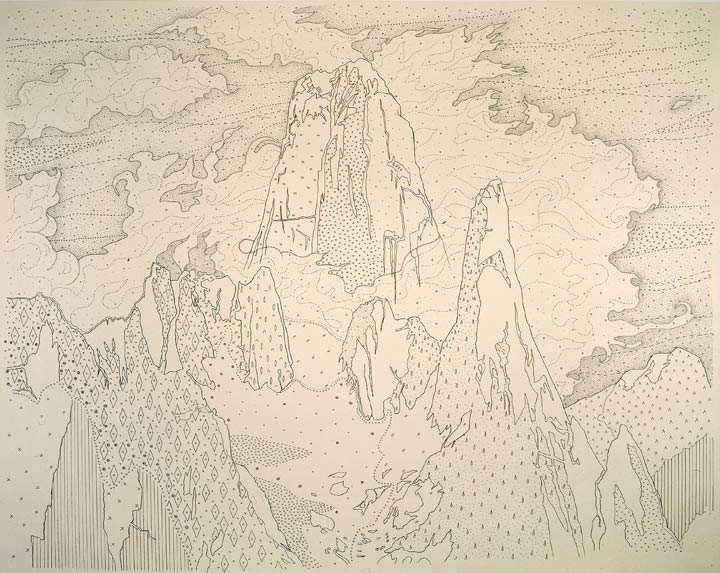The recent screening of a feature length documentary on William Kentridge at MOMA was eye opening. I'd always liked Kentridge from afar without having seen too much of his work in person. To tell the truth I liked his work enough to respect him as an artist but not enough to actively seek it out. Coming from this ambivalent point of view, "Anything Can Happen" was a perception changing experience. The movie is filled with clips from Kentridges early cartoons, his Box projects and his resent forays in to theater and opera (he spent several years designing and directing Shostakovitch's "The Nose").
Stop motion is the most obvious thread that ties all of these endeavors together and Kentridge uses it to rare expressive mastery. Kentridge's cartoons swirl out of a charcoal dust cloud, composing themselves amidst a chaotic uncertainty of smears and smudges that all too often mirrors the historic uncertainty of South Africa's troubled past. The only sense of resolution seems to be found in the act of erasure which is never fully realized. A penumbra of afterimages remain as both surface stains and temporal reminders that the movie might exist, but the original drawings that once comprised it have been destroyed in the birthing process that gave it life. A document survives but, like much of history it's a document whose very existence is made possible only by the destruction of the evidence that created it in the first place. It's a kind of post apartheid "Dance Macabre". A low tech waltz of life, death and perhaps at some point redemption.
Stop motion is the most obvious thread that ties all of these endeavors together and Kentridge uses it to rare expressive mastery. Kentridge's cartoons swirl out of a charcoal dust cloud, composing themselves amidst a chaotic uncertainty of smears and smudges that all too often mirrors the historic uncertainty of South Africa's troubled past. The only sense of resolution seems to be found in the act of erasure which is never fully realized. A penumbra of afterimages remain as both surface stains and temporal reminders that the movie might exist, but the original drawings that once comprised it have been destroyed in the birthing process that gave it life. A document survives but, like much of history it's a document whose very existence is made possible only by the destruction of the evidence that created it in the first place. It's a kind of post apartheid "Dance Macabre". A low tech waltz of life, death and perhaps at some point redemption.
However. as haunting and poetic as these cartoons are, its Kentridge's overall approach to the creative process that I was most impressed with. He spends most of the time talking not about the meaning behind his works but about the intuitive process that is so central to it's creation. He sees everything as a process, a long intervention, the outcome of which is determined less by intent than by accident. Early on in the film he says that for him "process is more important than fact", one could also say, engagement is more important then product. Indeed, the studio is presented as a kind of laboratory for ideas, perhaps even a playground. Judging by the copious interviews throughout the film, this is an association Kentridge would gladly welcome. It's as though his primary role as an artist is to develop the conditions in which his creativity can best flourish rather than itinerize the ends towards which it is deployed.
I'm reminded of something Francis Bacon once said about seeing himself primarily as a human transmitter, picking up signals he knew not from where. For him it was a kind of free association that he dared not question for fear that the act of inquiry would forever sever his connection to its source. I don't know if Kentridge shares this particular misgiving but he certainly shares the intent that motivates it. At one point he declares "I believe that if you work persistently, whatever is of interest inside you will eventually come out". I think a strong corollary can be drawn between the ability to dedicate ones life to persistent work and the mental attitude that privileges creative process over specific outcome.
I'm reminded of something Francis Bacon once said about seeing himself primarily as a human transmitter, picking up signals he knew not from where. For him it was a kind of free association that he dared not question for fear that the act of inquiry would forever sever his connection to its source. I don't know if Kentridge shares this particular misgiving but he certainly shares the intent that motivates it. At one point he declares "I believe that if you work persistently, whatever is of interest inside you will eventually come out". I think a strong corollary can be drawn between the ability to dedicate ones life to persistent work and the mental attitude that privileges creative process over specific outcome.








